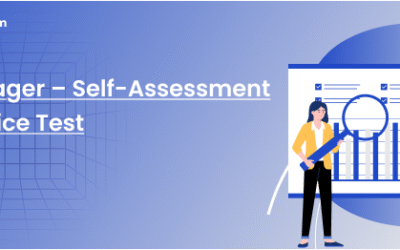Table of Contents
In today’s fast-moving business world, the role of Chief Transformation Officer (CTO) has become critical. Companies face constant pressure to adapt to change and innovate. A CTO steps in to lead this charge, focusing on digital transformation and organisational change.
These executives tackle significant challenges. They align the executive team around a shared vision, ensuring everyone pulls in the same direction. They also manage the complex task of driving transformations while balancing short-term needs with long-term goals. As a result, understanding the responsibilities of a CTO is vital for any organisation looking to navigate its way through turbulent times.
This post unfolds the key roles and responsibilities of a Chief Transformation Officer, showcasing how they can be a catalyst for change within your organisation. With a well-supported CTO at the helm, businesses can not only survive but thrive amid challenges. For more insights, check out the detailed analysis from McKinsey on the topic.
Understanding the Chief Transformation Officer Role
Navigating the modern business environment requires agility and a keen understanding of change. The Chief Transformation Officer (CTO) role has emerged as a response to these shifts. With the rise of technology and the changing expectations of customers, businesses now require leaders dedicated to steering transformation efforts.
The Evolving Business Landscape
The pace of technological change is relentless. Companies must adapt or risk falling behind. Consumer behaviour is increasingly driven by convenience and innovation, calling for businesses to rethink their strategies. Customers expect seamless experiences and quick responses to their needs, leading to an urgent need for transformation.
Consider this: when did you last choose a service based on how quickly they responded to your query? This shift in priorities highlights the demand for companies to embrace change. A dedicated CTO is essential in this landscape, ensuring that organisations not only react to these trends but anticipate and lead them. This position brings a focused approach to integrating technology and streamlining processes, enabling businesses to stay ahead and relevant.
Key Responsibilities of a CTO
The role of a Chief Transformation Officer is multifaceted, encompassing several key responsibilities that drive effective change. Here are the primary duties:
Strategising Change Initiatives: The CTO leads the creation and implementation of a transformation strategy aligned with organisational goals. This involves collaboration with various departments to ensure everyone understands their role in the transformation process.
Overseeing Implementation: After strategising, the CTO is responsible for managing the execution of these initiatives. This includes overseeing project managers and ensuring resources are allocated efficiently.
Fostering a Change Culture: An effective CTO helps develop a culture that embraces innovation and change. This involves encouraging team members to contribute ideas and share in the transformation efforts.
Measuring Success: To know if a transformation is working, the CTO establishes key performance indicators (KPIs) and tracks progress. This data-driven approach allows for adjustments along the way.
Engaging Stakeholders: The CTO acts as a bridge between the executive team and employees, ensuring that all parties are informed and engaged in the transformation process. Regular communication is key to maintaining alignment and enthusiasm.
The CTO’s role is pivotal in shaping how organisations navigate transformation. Through strategic planning, oversight, and cultural development, a CTO can be the driving force behind successful change initiatives. For more insights into these responsibilities, check out 9 Roles of a Chief Transformation Officer.
Core Skills and Qualifications of a CTO
The role of a Chief Transformation Officer requires a specific set of skills and qualifications to drive change successfully. These core competencies not only improve transformation strategies but also ensure that the organisation adapts effectively to the evolving landscape. Below are two essential areas that a CTO must excel in to lead their organisation towards success.
Leadership and Change Management
Strong leadership is non-negotiable for a Chief Transformation Officer. As the main driver of transformation, a CTO must inspire teams and foster a culture that embraces change. They must communicate a clear vision and ensure that every member of the organisation understands their role in executing that vision.
Change management expertise plays a crucial role as well. The ability to guide individuals through transitions helps mitigate resistance and ensures smoother adaptations. A CTO should be equipped with solid strategies to address any roadblocks that may arise during transformation efforts.
Here are some key aspects of effective leadership and change management:
- Building Trust: Establishing trust with stakeholders enhances collaboration.
- Effective Communication: Regular and transparent communication keeps everyone informed and engaged.
- Empowering Teams: Involving team members in decision-making fosters ownership and accountability.
- Adapting to Feedback: Being receptive to feedback allows for adjustments in strategy and approach.
Leadership in this context isn’t just about authority; it’s about being approachable and supportive. When a CTO demonstrates confidence and empathy, teams are more likely to rally behind transformative initiatives.
Strategic Thinking and Analytical Skills
A visionary mindset is essential for a CTO. Strategic thinking enables them to see the bigger picture and anticipate future trends. By assessing various scenarios and their potential impacts, a CTO makes informed decisions that align with long-term goals.
Analytical skills complement this by allowing the CTO to dissect data and extract insights. Understanding market dynamics and internal performances helps in prioritising initiatives that yield the best results.
Key components of strategic thinking and analytics include:
- Data-Driven Decision Making: Relying on solid data ensures strategies are based on facts, not assumptions.
- Identifying Opportunities: Spotting gaps in the market can lead to innovative solutions that propel the organisation forward.
- Scenario Planning: Considering multiple outcomes prepares the organisation for various challenges.
- Continuous Learning: Staying updated on industry trends is crucial for making relevant decisions.
In essence, a successful CTO must blend leadership prowess with sharp analytical skills. This combination not only facilitates effective change management but also supports the organisation in maintaining a competitive edge. Emphasising these core skills can significantly enhance the CTO’s impact on the organisational transformation journey.
Challenges Faced by Chief Transformation Officers
Chief Transformation Officers face several hurdles as they guide organisations through change. Understanding these challenges is essential for them to strategise effectively. Below are two significant issues that CTOs encounter.
Resistance to Change
When it comes to change, resistance often rears its head. It’s natural for employees to feel uneasy about new processes or strategies. Many may fear how these changes impact their roles or the overall company culture. This resistance can stall transformation initiatives and create a challenging environment for a CTO.
To tackle resistance effectively, here are some strategies CTOs can employ:
Open Communication: Regularly communicate the reasons behind the changes. Help employees understand the benefits and how it aligns with the organisation’s goals.
Involve Employees Early: Engage team members in the planning stages. This inclusion fosters a sense of ownership and reduces apprehension about changes.
Provide Training: Offer training sessions that equip employees with the skills they need to navigate the new environment confidently.
Share Success Stories: Highlight quick wins and positive outcomes from initial changes. This can build momentum and encourage sceptics to get on board.
By addressing resistance proactively, CTOs can create an atmosphere that is more open to change, paving the way for successful transformations.
Aligning Stakeholders
In any transformation journey, aligning stakeholders is crucial. Different departments often have varying priorities, and this can create friction. A cohesive approach is vital to ensure everyone is working towards the same objectives.
Here’s why stakeholder alignment matters and how a CTO can achieve it:
Establish a Common Vision: Articulate a clear and compelling vision for the transformation. This should resonate with all levels of the organisation.
Regular Updates and Feedback: Keeping stakeholders informed through regular updates can enhance trust. Encourage feedback to ensure their concerns are addressed.
Cross-Functional Collaboration: Promote collaboration among departments. This breaks down silos and fosters a sense of unity.
Recognise Contributions: Acknowledge the efforts of different teams. Celebrating collective achievements boosts morale and reinforces alignment.
By aligning stakeholders effectively, a CTO not only facilitates smoother transformations but also enhances overall organisational culture. For further insights into managing teams, consider reading about What Is Product Management?.
Measuring Success in Transformation Initiatives
Understanding how to measure the success of transformation initiatives is crucial for a Chief Transformation Officer (CTO). Effective measurement not only reveals the impact of changes but also highlights areas needing improvement. Here, we explore relevant Key Performance Indicators (KPIs) and the importance of continuous feedback for transformation success.
Key Performance Indicators (KPIs) for Transformation
Establishing specific KPIs allows organisations to quantitatively assess the progress of transformation initiatives. Below are some vital KPIs that can help a CTO measure success effectively:
Employee Engagement: Track survey results and participation rates in change initiatives. High engagement levels often indicate acceptance and support for new processes.
Customer Satisfaction Scores: Monitor customer feedback and satisfaction metrics to gauge how transformations impact service or product quality. Changes that enhance customer experience should reflect in these scores.
Operational Efficiency: Measure the time and resources required to complete key processes before and after transformation efforts. A decrease in time and resources typically indicates successful streamlining.
Financial Performance: Analyse revenue growth and cost reductions resulting from transformation initiatives. Improved financial metrics suggest successful strategic changes.
Time to Market: Evaluate the speed at which new products or services are launched. A quicker time to market often reflects improved processes and innovation.
Utilising a dashboard to visualise these KPIs can help stakeholders understand ongoing progress. Regular assessments against these indicators can inform adjustments in strategy. For more information on performance analysis, check out What Is Project Management?.
Continuous Improvement and Feedback Loops
In the realm of transformation, continuous improvement is essential. CTOs must establish feedback loops that encourage ongoing assessment and adjustments based on employee and customer insights. Here are some key considerations:
Regular Feedback Sessions: Conducting periodic feedback sessions with employees can unveil challenges and successes in real-time. These insights are invaluable for refining strategies.
Customer Feedback Mechanisms: Implementing surveys or feedback forms post-implementation allows businesses to capture customer sentiments promptly. Insights gathered can guide future iterations of products or services.
Iterative Adjustments: Be prepared to make rapid changes based on feedback. Flexibility allows the organisation to adapt and improve continuously, ensuring initiatives remain relevant.
Celebrating Wins: Acknowledge and celebrate both minor and major successes. Recognition boosts morale and encourages ongoing commitment to transformation efforts.
Imagine embarking on a long journey. You wouldn’t wait until the end to check your maps or ask for directions, would you? Continuous feedback resembles those periodic checks, ensuring you stay on course. By prioritising ongoing assessment, a CTO can drive sustained success in transformation initiatives.
The Future of the Chief Transformation Officer Role
As businesses evolve, the Chief Transformation Officer (CTO) role becomes increasingly essential. The demands of today’s consumers require organisations to embrace change more than ever. Recognising this need, the position of CTO is rapidly transforming. Here, we explore significant trends affecting the role and its emergence as a strategic partner within executive teams.
Emerging Trends in Transformation
The environment in which businesses operate is shifting profoundly. Notably, a few key trends are influencing transformation efforts across industries:
Increased Technology Adoption: More organisations are integrating advanced technologies. Artificial Intelligence (AI) and machine learning are paving the way for smarter decision-making. By using these tools, CTOs can gather insights that drive meaningful change.
Data Analytics Focus: Data-driven decision-making is at the forefront. Executives are now recognising the value of interpreting large volumes of data. CTOs are tasked with not only managing data flow but also leveraging analytics to support transformation initiatives.
Cross-Functional Collaboration: Successful transformation requires cooperation between departments. The CTO must bridge gaps, ensuring that all teams work towards common objectives. This approach fosters a holistic transformation strategy that aligns with the overall business vision.
Customer-Centric Strategies: Understanding customer behaviour and preferences is vital. As consumer expectations evolve, organisations must adapt quickly. CTOs are central to driving these changes, ensuring services and products resonate with customer demands.
In this modern age, businesses that embrace these trends are better positioned to thrive. CTOs are key players in facilitating these shifts, ensuring organisations remain competitive and responsive.
The CTO as a Strategic Partner
As the CTO role evolves, it is steadily becoming a pivotal player within the executive team. This transformation has several implications:
Collaboration with the CEO: CTOs now work closely with the CEO, providing insights that shape organisational strategy. This partnership allows for a seamless alignment between transformation efforts and corporate goals.
Influencing Board Decisions: A CTO’s expertise in transformation allows them to contribute meaningfully to board-level discussions. Their ability to interpret complex data and trends empowers boards to make informed decisions that affect the company’s future.
Prioritising Change Management: As change becomes a constant, the CTO’s role in leading change management processes is critical. They not only oversee transformation strategies but also cultivate a culture that embraces change throughout the organisation.
Driving Innovation: CTOs are now seen as innovation leaders. They encourage teams to explore new technologies and methodologies, ensuring that organisations remain forward-thinking in their approach.
The evolution of the CTO as a strategic partner solidifies the position’s importance across various industries. To explore more about this shift in leadership, check out The rise of the chief transformation officer. These professionals are not just change agents; they are vital contributors to holistic business success.
Conclusion
The Chief Transformation Officer plays an essential role in steering organisations through change. By strategically overseeing transformation initiatives, they ensure that companies can adapt and thrive in a competitive landscape.
Understanding the breadth of a CTO’s responsibilities highlights the importance of this position in fostering a culture that welcomes innovation. For those considering the introduction of a CTO, reflect on how their expertise could enhance your organisation’s adaptability and responsiveness.
Have you thought about the potential impact a dedicated leader of transformation could have on your team? Embracing this role could be a crucial step toward a successful future. Explore more on related topics at What Is Smart City Management?.



